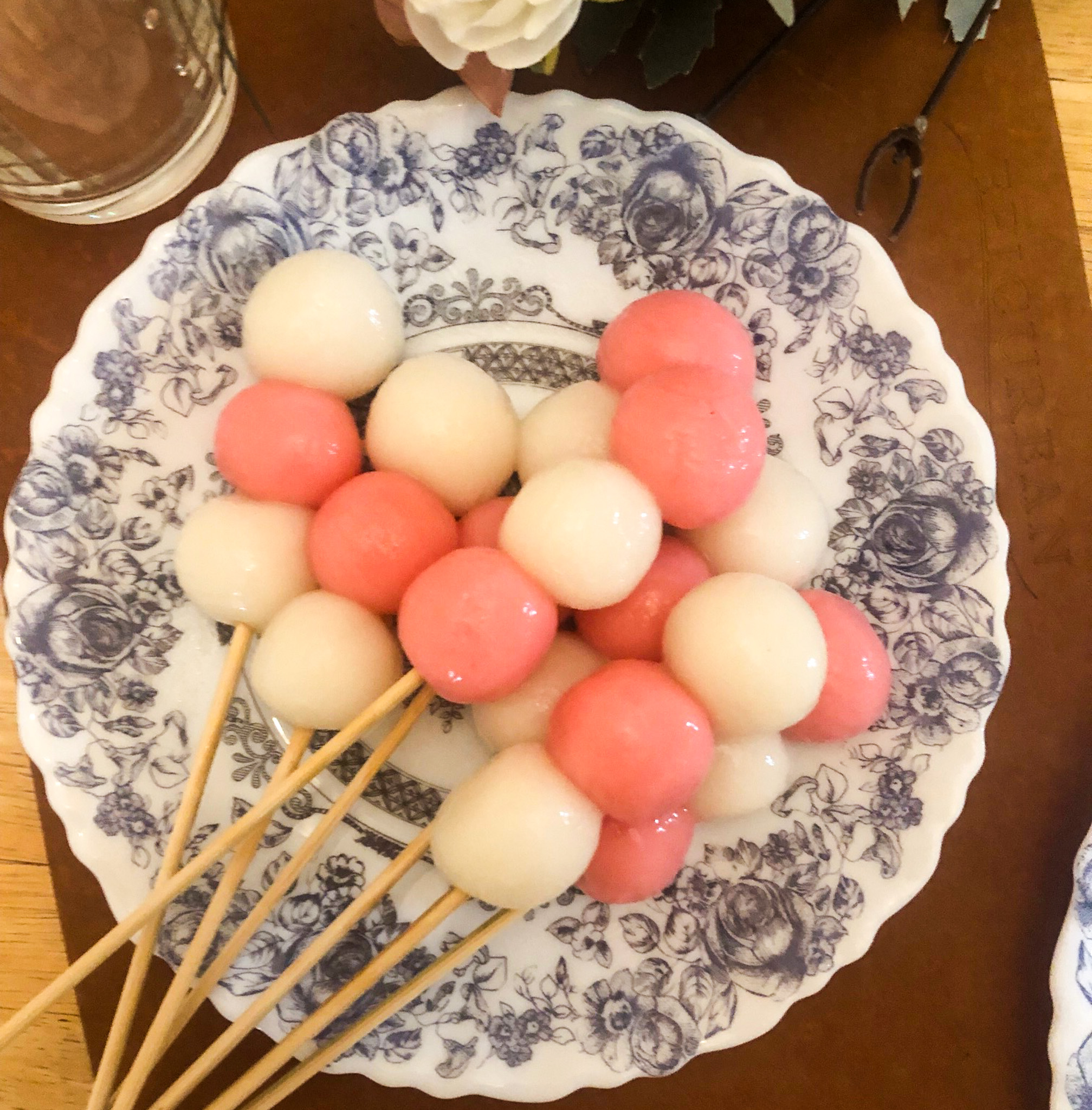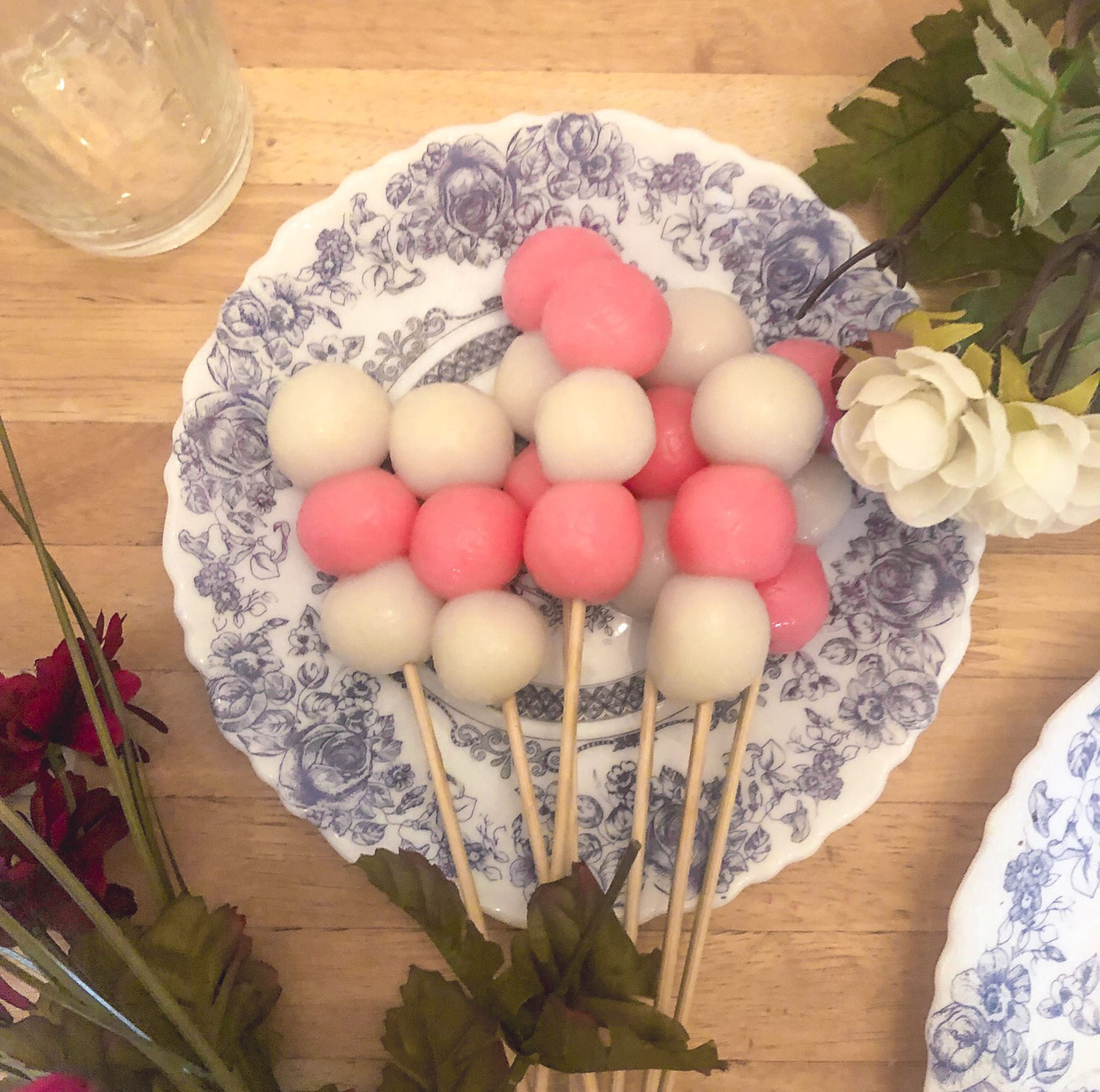Posted on Feb 7, 2024 • 5 minutes • 909 words

Happy Valentines Day! In honor of the holiday, I figured I should take advantage of the bottle of pink food coloring in my baking cabinet (it’s actually the only color of food coloring I have). This recipe is inspired by hanami dango, which is one of the cutest desserts ever, in my opinion. I love dango it is so simple, not too sweet, and so chewy. Traditionally hanami dango are pink, white, and green, but I made it with just pink and white for Valentines Day.
So, what is dango? Dango is a traditional Japanese sweet snack (wagashi) made from rice flour. It is typically served on skewers and comes in many different flavors and colors. A very popular type of dango is hanami dango, which consists of three colored dumplings: pink, white, and green. Dango has a chewy texture a bit like mochi but more bouncy. It is often enjoyed during cherry blossom viewing parties in Japan as a snack or dessert.
Ingredients
Dango is often made with a combination two types of rice flour: joshinko and shiratamako. There are blends that sell them pre-mixed, but if you prefer to determine the ratio yourself it is better to buy both. Joshino and shiratamako have different effects on the ultimate texture of the dango, and depending on the ratio you use, you can achieve very different results! Joshinko, which is non-glutinous rice, gives the dango a firmer texture, while shiratamako, made from glutinous rice, contributes to the soft, stretchy mochi quality of dango. Keep in mind that shiratamako and mochiko, another popular rice flour, are not the same – shiratamako tends to be a bit pricier, but it makes a much smoother and more pliable dough. In my experience, the best place to find any of these rice flours is at an Asian food market! That being said, here are the ingredients (quite simple!):
- Joshinko rice flour
- Shiratamako rice flour
- Powdered sugar
- Boiling water – needs to be hot!
- A tiny bit of red food coloring
Making Dango
This recipe I listed in grams, even though I usually use cups when making doughs. This is because rice flour in particular tends to be very inconsistent in volume depending on brand, weather, humidity, altitude, what color shirt you’re wearing…(just kidding about that last one.) But yes, because of this it is better to measure in grams. A kitchen scale is your best friend here!
You’ll start by sifting together the dry ingredients in a bowl. Sometimes the rice flour can be a bit clumpy; just try to break up those clumps as best as you can. Then, pour in the hot water, which should dissolve with the rice flour. Knead it with a pair of chopsticks, and it should form a smooth, workable dough as you knead. If it is too wet or too dry after several minutes of kneading, add more rice flour or water to adjust, although keep in mind to be careful with how much you add as it can easily change the texture of the dango drastically.
If you want to color your dango, separate it into portions depending on how many colors you want to use. Mix each ball of dough with a drop of food coloring (you can leave one plain for white). Then you can divide into small balls and boil them to make your dango!

Tips
- Be careful with the coloring! Food coloring is strong; measure in drops not spoonfuls. One drop is usually enough to color a whole batch of dough. If you don’t have pink food coloring, you can also just use a smaller amount of red!
- Aim for smaller, not larger, balls. Larger dango take longer to cook through, and they’re also just harder to bite! The dango will end up being larger than when they went into the pot, so be sure to account for that.
- The dango will float before they are done cooking! Once you see them float, give them another couple of minutes before you take them out.
Valentine's Day Dango
A tasty, chewy treat!

| Prep Time: 20 min | Cook Time: 20 min |
|---|---|
| Total Time: 40 min | Serves: 6 |
Ingredients
- 100g joshinko rice flour
- 100g shiratamako rice flour
- 1/2 cup boiling water (add more as needed)
- 1/4 cup powdered sugar
- 1 drop of red or pink food coloring
Instructions |
- You will need skewers to serve this recipe, so make sure you have those on hand (of course, if you don’t they can be eaten without being skewered!)
- Sift both types of rice flour and sugar into a large mixing bowl and stir to combine with a pair of chopsticks.
- While continuing to stir, slowly stream in the hot water. Keep stirring until it forms a soft dough.
- Divide the dough into two even portions (more if you have more colors!) Add the food coloring to one portion and mix until the color is homogenous.
- Divide and shape the dough into small round balls, about 24 in total.
- Bring a pot of water to a rolling boil, and drop in the dango. Stir gently when you first put them in to ensure they don’t stick to the bottom.
- 2 or 3 minutes after the dango float, fish them out with a slotted spoon or strainer. Place them in a bowl of ice water to cool.
- Once the dango are cooled, place them on skewers (3 per skewer), serve, and enjoy!
Notes |
This recipe is vegan and gluten-free!.













